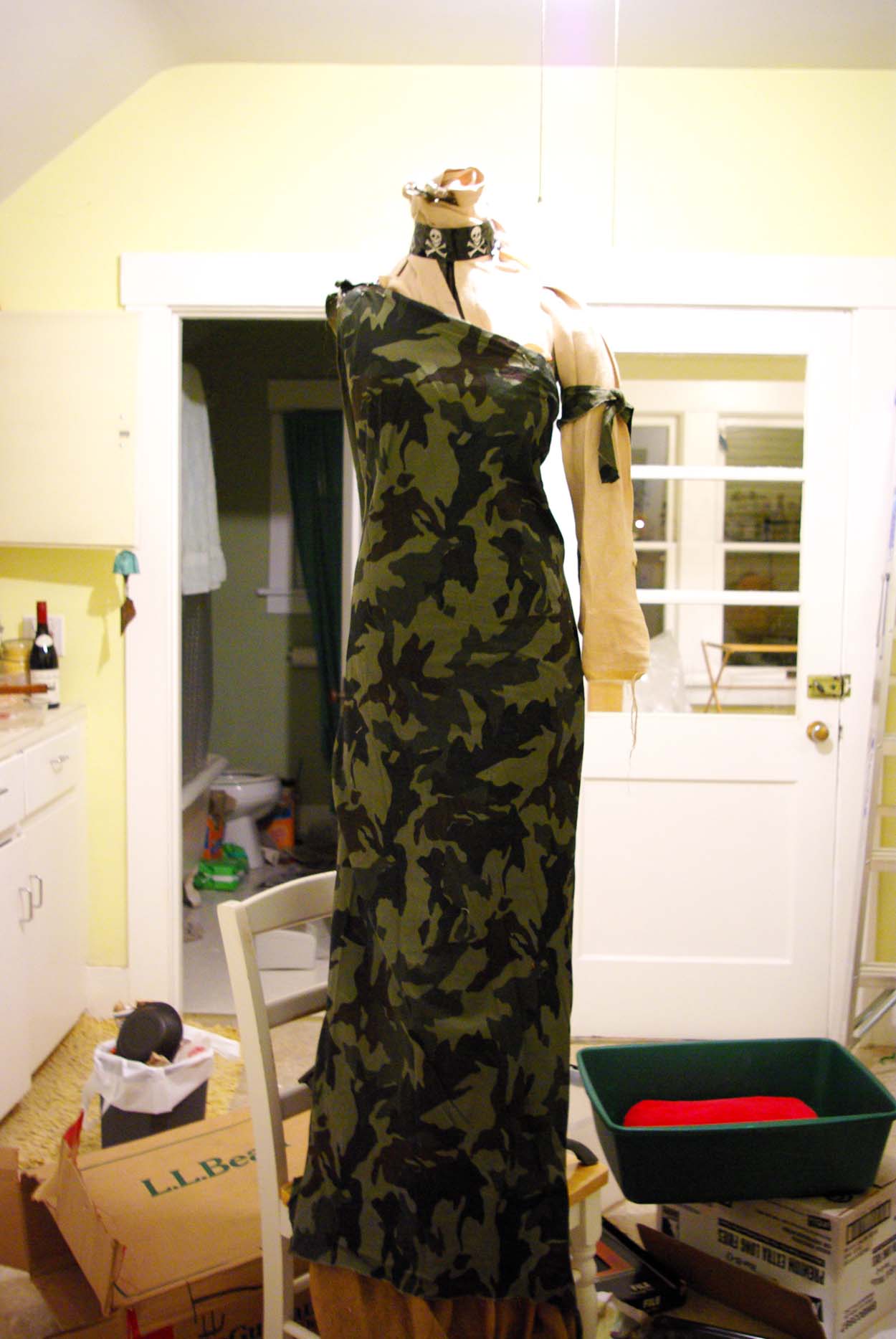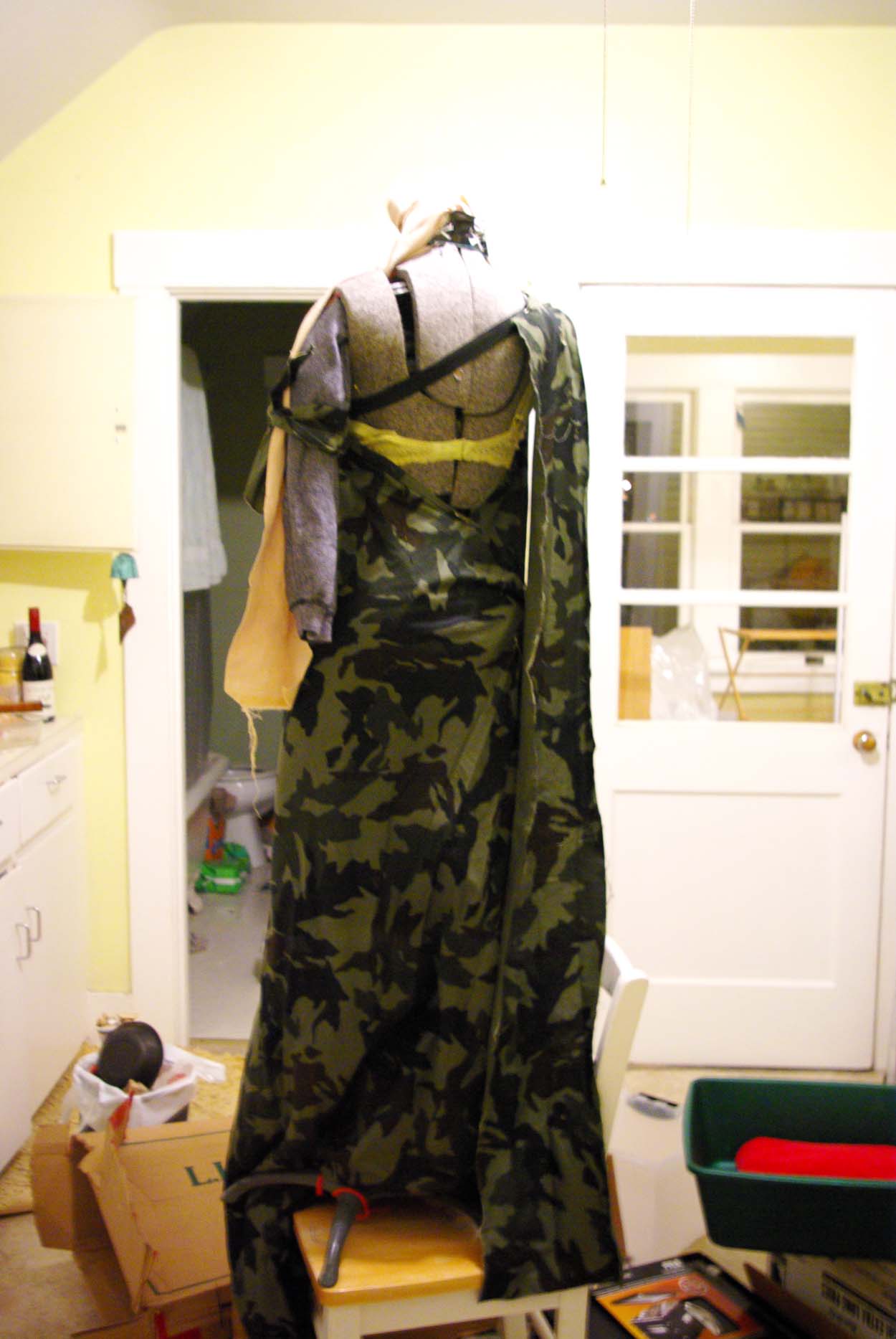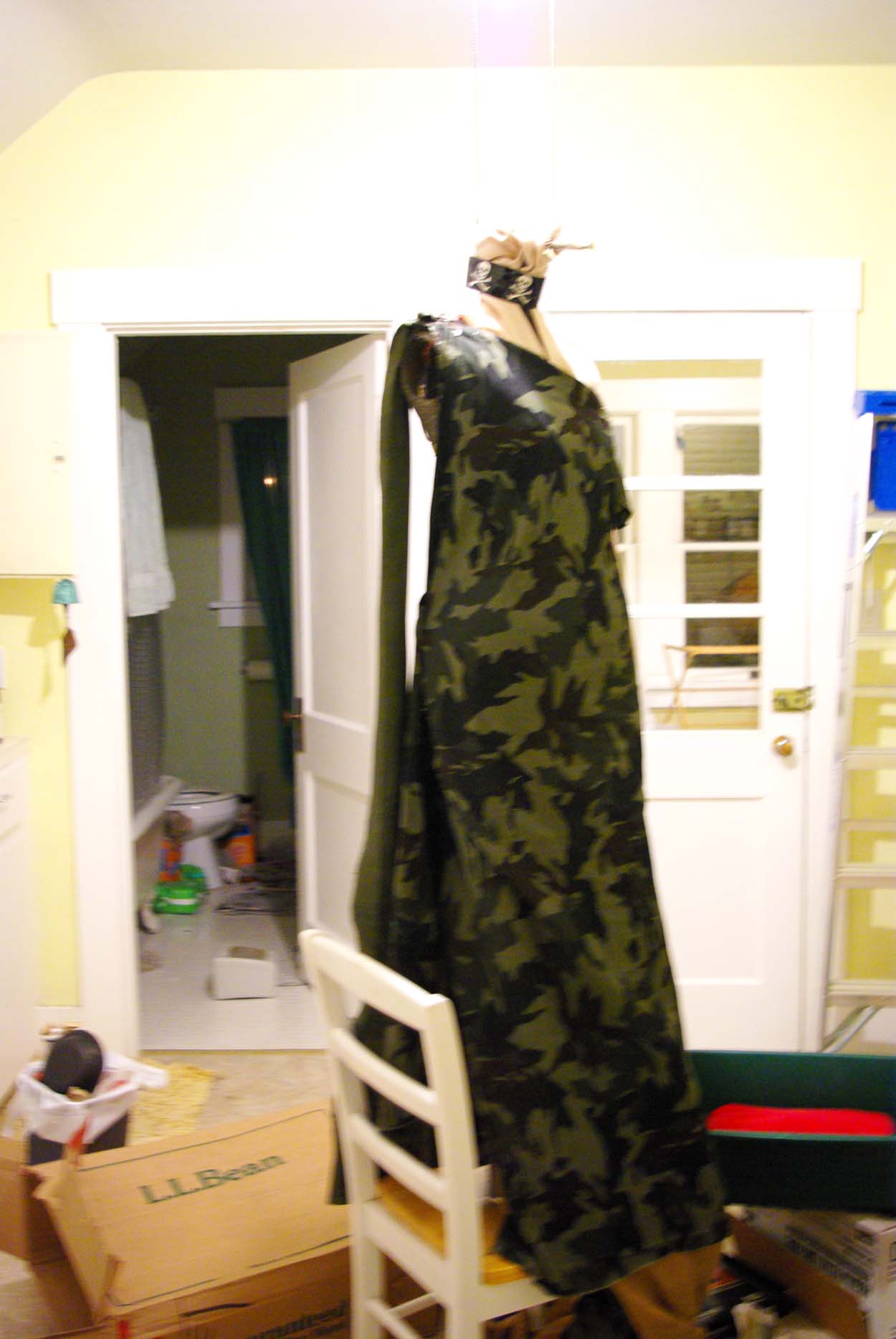Militant homosexual dress: made for the Portland, Oregon Dyke March, summer 2005, bias cut, floor length, one shoulder, camouflage print dress (held up with a bra and extra elastic from left armpit, around the back to right shoulder replacing the missing bra strap). Mixed media (printed cotton canvas, safety pins, green bra, extra elastic).
________
Dyke marches are about lesbian visibility, about showing that we actually exist (and there are enough of us to stop traffic), that we vary greatly, and that we’re a community. But dyke marches don’t actually seem to vary that much. Even in Chicago, they are mostly white, and every one I have been to has been mostly young; they are often not so much about community as cliquey-ness. That is, there is a group of organizers and a lot of their friends and the rest are on the periphery. It seems that most of the non-white lesbians show up for the main event, Pride, rather than the small, day-before side show that is the dyke march. Part of that is that pride parades have an older organizational strategy (developed over many years to accommodate increasingly diverse notions of queerness) where in order to insure that people from various communities show up, they invite representatives from those communities to be on the organizational committee. Dyke marches seem to rely on the organizational structure of new media. Namely, put an idea out there on the internet and it will spread on its own (though it is a distinct possibility that the information IS spreading to everyone the organizers have envisioned it spreading to already).
Overall verdict from the dyke march: this dress didn’t work. It’s unclear whether it just didn’t read, was too femmy, not punk rock enough, etc. The net effect was no one talked to us the whole afternoon, which felt odd. It’s highly anomalous for me to walk around wearing something I’ve made and not receive comments from strangers — in any city, on any day, let alone when marching alongside folks, when people usually want to talk. At the Portland Dyke March, the connected dykes in dresses wore cocktail dresses and combat boots, something I’ve worn since — yes — some of them were in baby shoes.
One day in Chicago, on the #55 through the south side (I was on my way to Noah’s house!) I sat behind a pair of U of C babydykes, who were talking in code about one of them going on testostorone (as an early stage of a f to m gender transition) — and they were probably using needles that a friend of mine supplied. Yet there was no nod in my direction, as would have been subculturally …. had they recognized me as anything other than het (or perhaps, other than femme). The person who did talk to me was an older African-American gentleman wearing a very nice fedora who complimented me on my hat (a grey fur-felt trilby). We all miss and catch opportunities to create minor, temporary super-communities via such conversational practices for using clothing (and other corporeal media – hair, piercings, etc.) to simultaneously acknowledge and yet work across difference.
Dyke marches bill themselves as a new lesbian consciousness, a deliberate attempt to get away from Michigan Women’s Music Festival style, folk rock scenes which (in addition to bad taste in music) purposefully excluded/exclude transgendered lesbians. This transformation is laudable (and I’m often both on its side and included by it). What’s going on is not a case of people simply wanting to hang out with their friends: it’s something broader, a political vision. Yet the actual effect is to represent a gay sub-utopia that (unlike hip-hop, for example) doesn’t acknowledge its basis in specific social circles.
______
This is part of the Gay Utopia project, originally published in 2007. A map of the Gay Utopia is here.



